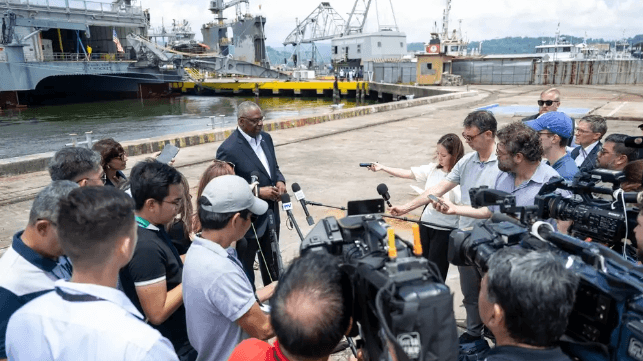U.S. Navy Underwrites Renewed Expansion at Subic Bay Naval Base

In the early 1900s, the U.S. Navy began construction on a sprawling base at Subic Bay on the Philippine island of Luzon, a U.S. colony at the time. That facility turned into a semipermanent launch pad for American power projection in Southeast Asia. Expanded to fill an essential role during the Vietnam War, Naval Base Subic Bay became the second-largest American overseas military base in the world, second only to nearby Clark Air Base. That ended in 1992, when the Navy's lease expired and negotiations to extend it failed - but recent activity suggests that American involvement at Subic Bay could soon resume.
Naval Sea Systems Command has a new contract with the Armed Forces of the Philippines to finance the construction of a new finger pier at Naval Operating Base Subic, the renamed home port for the Philippine Navy's surface combatants, according to USNI. In a reversal of fate, the Philippine Navy leases its 100 acres of space from an American hedge fund, which purchased the shipyard site out of bankruptcy several years ago. The docks in the leased area will not be enough to accommodate all of the newly-built tonnage that the Philippine Navy will be getting from Korean shipbuilders in the next few years, so the new finger pier will provide room for growth.
The construction on the new U.S. Navy-financed finger pier will be carried out by the local Subic Drydock Corporation, and will be administered by NAVSEA's International Fleet Support Program Office - the Navy's aftersales service and technical support bureau for foreign military sales. Among other clients, the office supports the Philippine Navy, which operates several former U.S. Coast Guard cutters.
American warships periodically call at Subic Bay while operating in the South China Sea, and the extra wharfage could help preserve pierside access for U.S. Navy port calls. Subic is located just 300 nautical miles from the Spratly Islands, less than a day's sailing away from this strategic flash point. The base has also provided a safe harbor when needed for critical repairs: when the damaged destroyer USS John S. McCain needed a port of refuge during transport to a shipyard in 2017, the vessel was taken to Subic Bay for inspection and stabilization.
